The Economics and Statistics Division maintains archives of previous publications for accountability purposes, but makes no updates to keep these documents current with the latest data revisions from Statistics Canada. As a result, information in older documents may not be accurate. Please exercise caution when referring to older documents. For the latest information and historical data, please contact the individual listed to the right.
<--- Return to Archive
For additional information relating to this article, please contact:
September 27, 2018NOVA SCOTIA QUARTERLY POPULATION ESTIMATES AS OF JULY 1, 2018 
Nova Scotia’s population increased by 4,234 between April 1 and June 30, 2018. The population as of July 1, 2018 was 959,942, the highest population for Nova Scotia on record. Since April 1, 2015 Nova Scotia's population has increased by 23,671. This quarter's increase reflects an increase in immigrants and net interprovincial migration offsetting the natural population change.
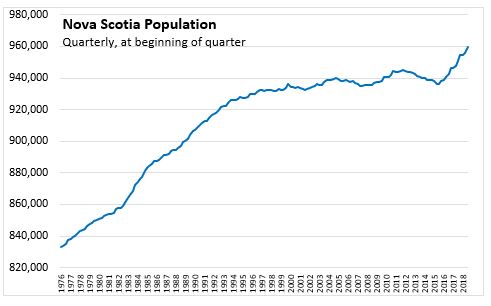
There are seasonal patterns in quarterly population changes, particularly evident in births and international migration. In recent years, the second quarter has shown strong population growth.
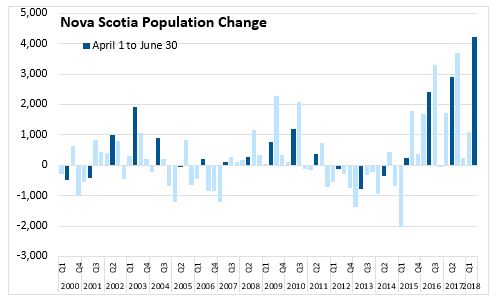
Population growth in Nova Scotia is typically slower than the national average pace, though this quarter shows similar growth rates between the province and the national average. In the last quarter, Nova Scotia’s population increased by 0.44 per cent compared to the April 1 estimate. The national population grew by 0.46 per cent over this period. Compared with July 1, 2017 Nova Scotia’s population has increased by 0.97 per cent, or 9,262, while the national population grew by 1.42 per cent.

In recent quarters, immigration from other countries has been a strong contributor to population growth in Nova Scotia. Nova Scotia received 1,625 immigrants during the second quarter of 2018. This is the highest number of immigrants since the first quarter of 2016.
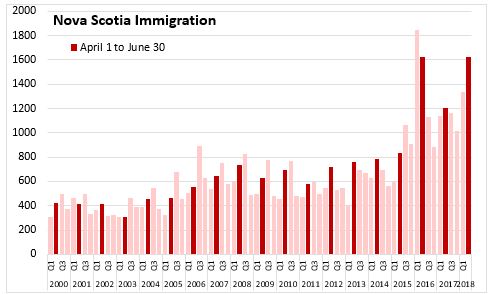
Nova Scotia’s natural population change (the number of births, less the number of deaths) has been negative for several years. Between April 1, 2018 and June 30, 2018, there were 2,164 births and 2,281 deaths, amounting to a natural population decline of 117.
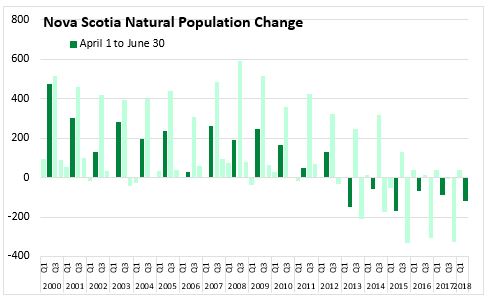
Interprovincial migration has historically shown a net outflow of Nova Scotia's population to other provinces. Recent quarters have shown population growth through interprovincial movements. This quarter, Nova Scotia showed a net inflow interprovincially of 1,182 persons, with net inflows from all provinces.
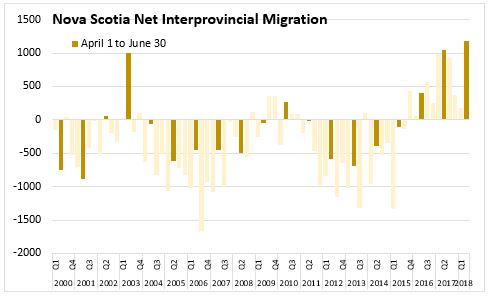
Outmigrants from Nova Scotia to other provinces increased compared to the second quarter of 2017. Out-migration to Newfoundland and Labrador, Alberta, and Quebec (almost no change) slowed, while there were increases in the number of Nova Scotians leaving for all other provinces compared to the same quarter in 2017. There was a slight bump in the number of Nova Scotians leaving for New Brunswick and Ontario this quarter.

In-migrants to Nova Scotia were once again largest from Ontario, Alberta, and New Brunswick. Manitoba saw an increase in people coming to Nova Scotia compared to the same quarter last year, although overall numbers are quite small.
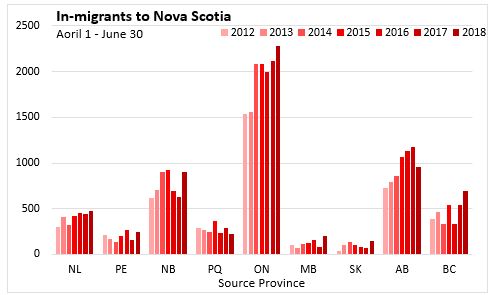
Interprovincial migration to Alberta has switched back to an outflow situation from Nova Scotia, although this quarter shows a smaller number than second quarter of 2017. BC has shown a larger increase in net migration compared to previous years, a similar situation seen with Newfoundland and Labrador.
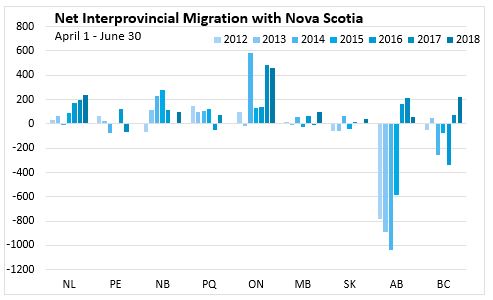
Statistics Canada Cat. No. 91-215
Source:
Quarterly Demographic Estimates, Statistics Canada. Pub 91-002-X (free)
Statistics Canada CANSIM tables: 17-10-0009-01 (Population estimates), 17-10-0020-01 and 17-10-0045-01 (Interprovincial Migrants), 17-10-0059-01 (Births and Deaths), 17-10-0040-01 (International Migrants)
<--- Return to Archive